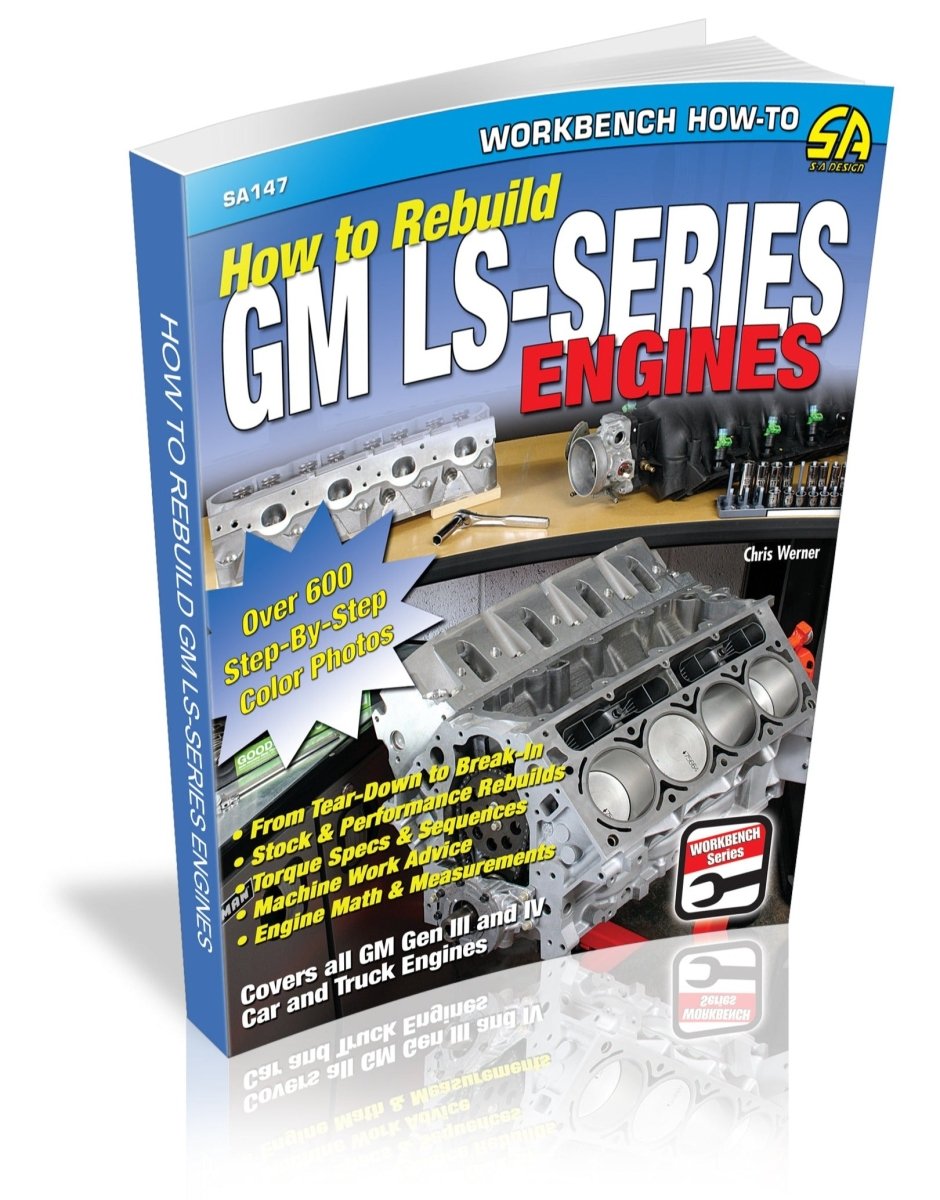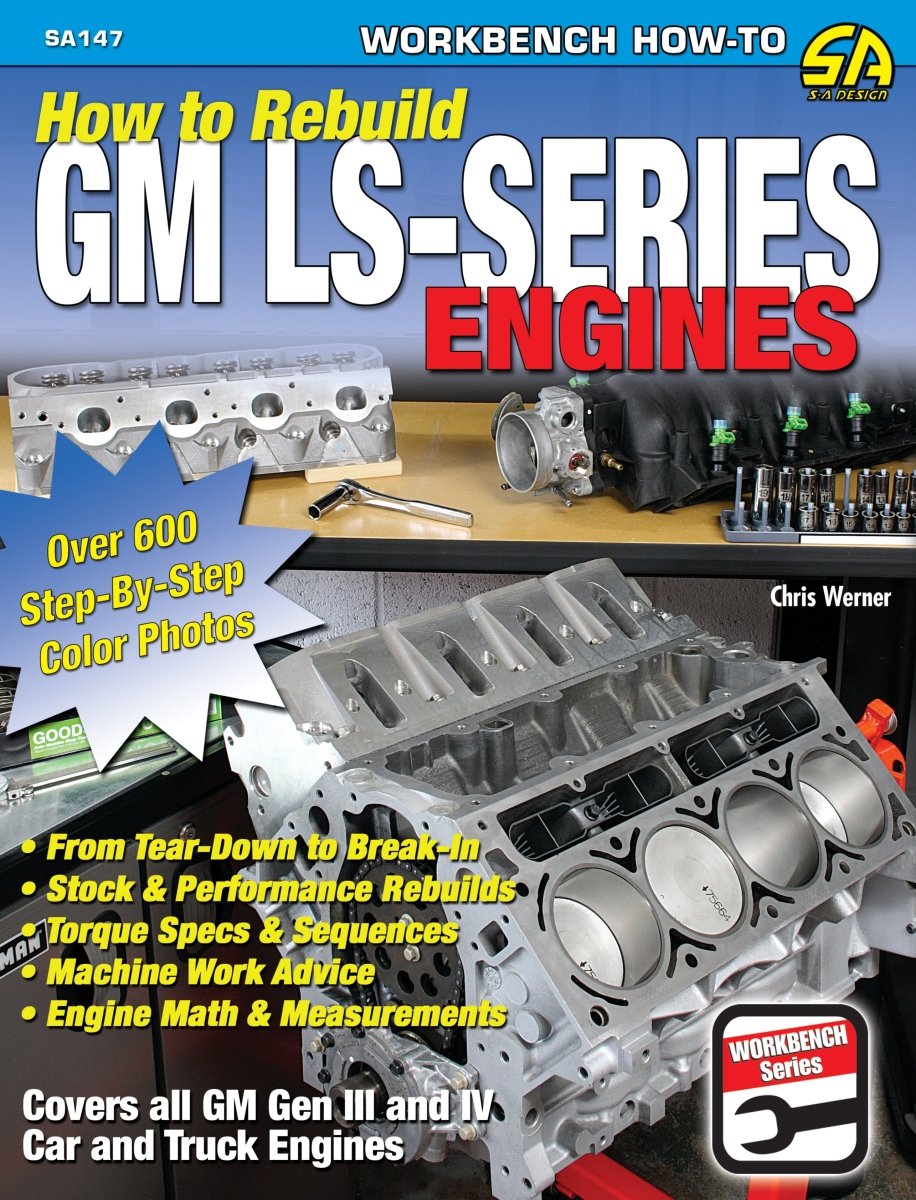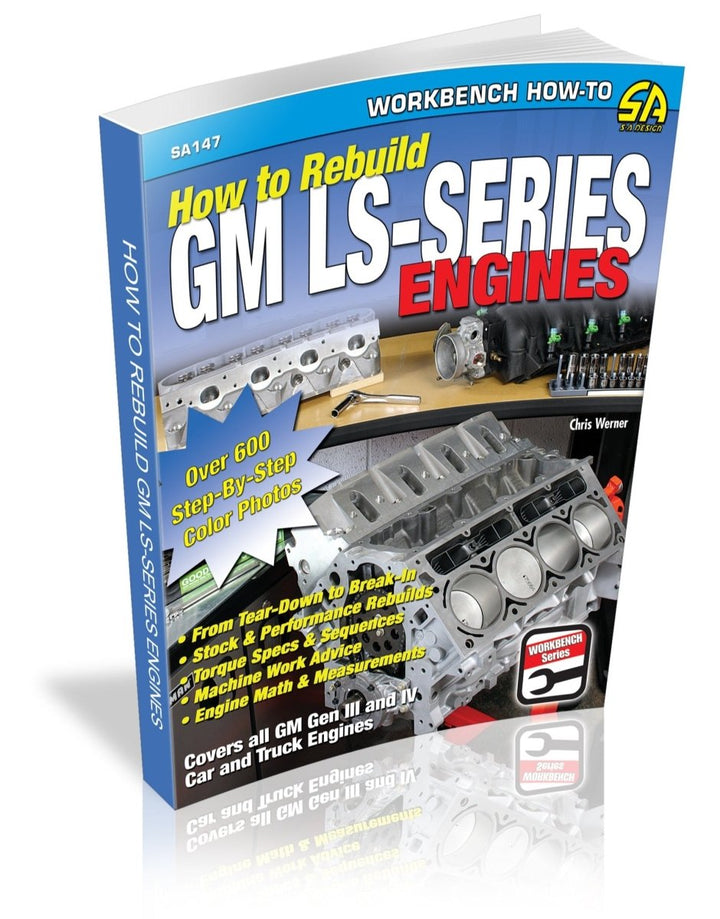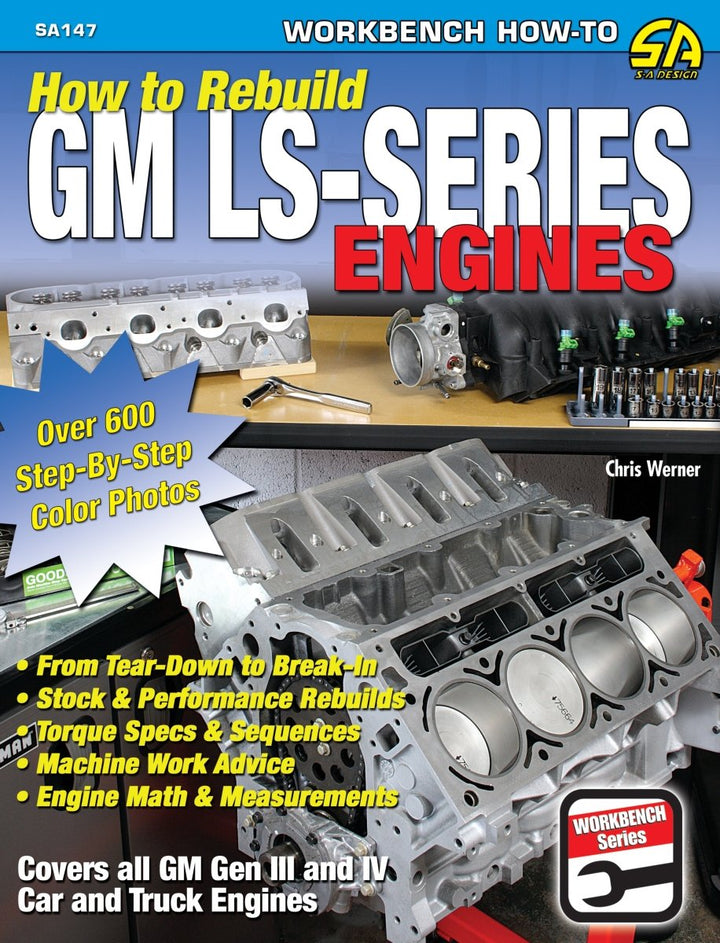In this special Workbench book, author Chris Werner uses more than 600 photos, charts, and illustrations to give simple step-by-step instructions on disassembly, cleaning, machining tips, pre-assembly fitting, and final assembly. This book gives considerations for both stock and performance rebuilds. The book guides you through both the easy and tricky procedures, showing you how to rebuild your engine and ensure it is working perfectly. The book also illustrates many of the performance components, accessories, and upgrades that have been developed for the LS-series family of engines.
As with all Workbench titles, this book details and highlights special components, tools, chemicals, and other accessories needed to get the job done right, the first time. Appendices are packed full of valuable reference information including helpful conversions and common abbreviations. You'll even find tips that will help you save money without compromising top-notch results.
Introduction: What is a Workbench® Book?
Chapter 1: The Small-Block Chevrolet Reborn: GM’s Gen III and IV V-8s
The Small-Block Family Tree
Generation I
Generation II
The Gen III Era Begins
The Gen IV: Improvements Abound
Determining Whether Your Engine is a Gen III/IV
The Small-Block Lives!
Chapter 2: Engine Rebuilding: Skills, Techniques and Tools
What is a “Rebuild?”
Do I Need a Rebuild?
Who Can Perform a Rebuild?
What Tools are Needed?
Where Can a Rebuild be Performed?
Conclusion
Chapter 3: Engine Disassembly
Organization Techniques
Step-By-Step Engine Disassembly
Chapter 4: Parts Inspection and Selection
Parts Selection Words of Wisdom
Engine Block
Rotating Assembly
Cylinder Heads
Valvetrain
Gaskets
Fasteners
Other Engine Parts
Conclusion
Chapter 5: The Machine Shop
Selecting a Machine Shop
Before Heading to the Machine Shop
Block Machine Work
Crankshaft Machine Work
Connecting Rod Machine Work
Piston Machine Work
Balancing the Rotating Assembly
Cylinder Head Machine Work
Other Machining Processes
Final Machine Shop Notes
Chapter 6: Component Cleaning and Preparation
Cleaning Supplies
Safety First!
Final Hints
Step-By-Step Engine Component Cleaning
Chapter 7: Pre-Assembly Procedures
Do I Really Need to Pre-Assemble?
Pre-Assembly Supplies
Step-By-Step Pre-Assembly Procedures
What If Anything Goes Wrong?
Pre-Assembly Complete
Chapter 8: Final Assembly
Before You Begin
Final Assembly Supplies
Final Notes
Step-By-Step Final Assembly Procedures
Chapter 9: Break-In and Tuning
Engine Reinstallation
Final Preparation
Start-Up
Break-In
ECM/PCM Tuning
Conclusion
Appendix
General Calculations for Rotating Assembly
Compression Ratio Calculation
Cylinder Numbers and Firing Order
Torque Sequences
Torque Specifications
Piston Ring Gap Alignment
Timing Belt/Chain Alignment Marks
General Engine Specifications
Helpful Unit Conversions
Glossary of Common Abbreviations
Source Guide





